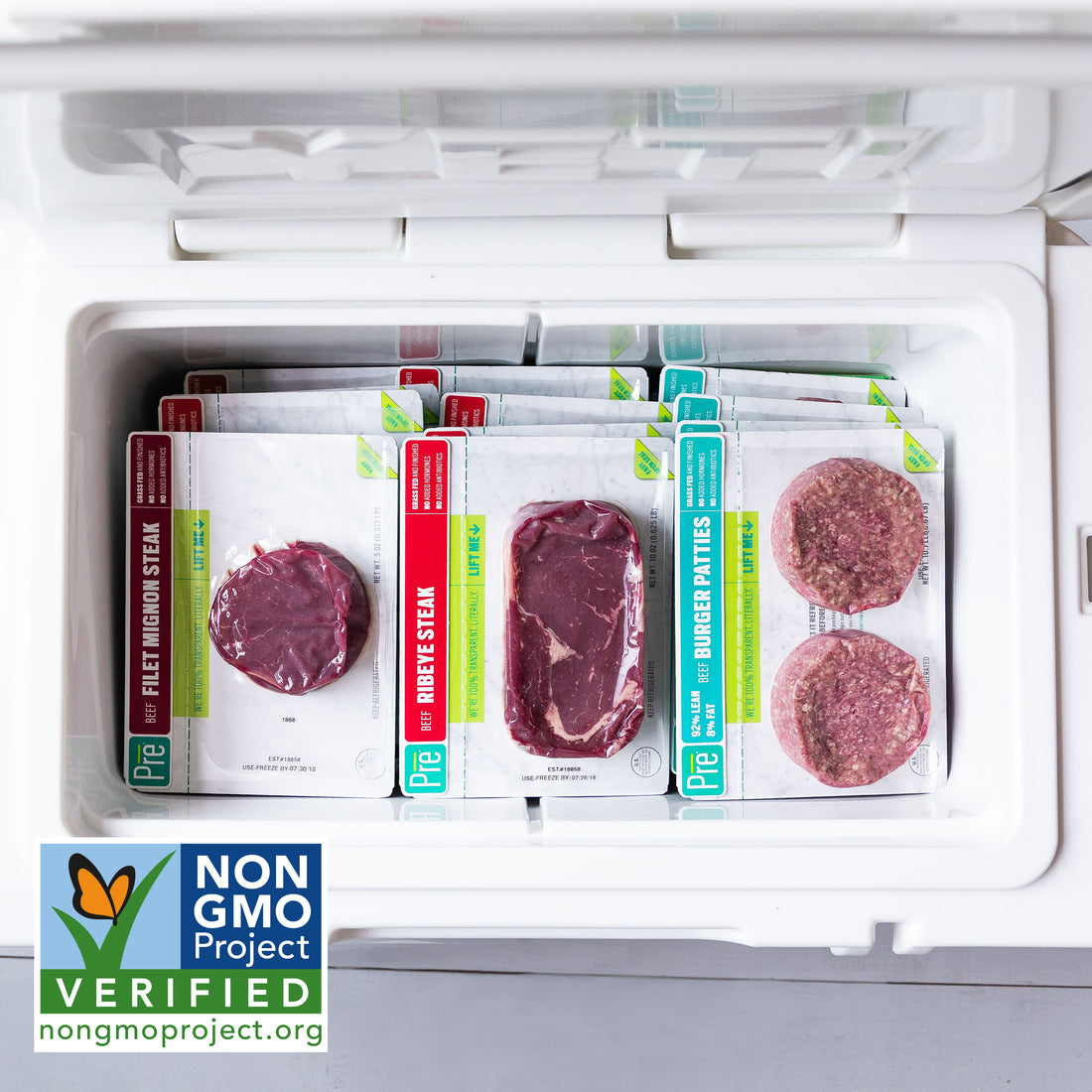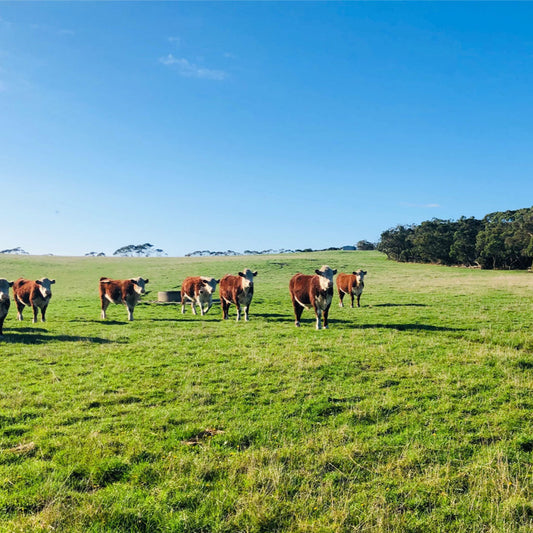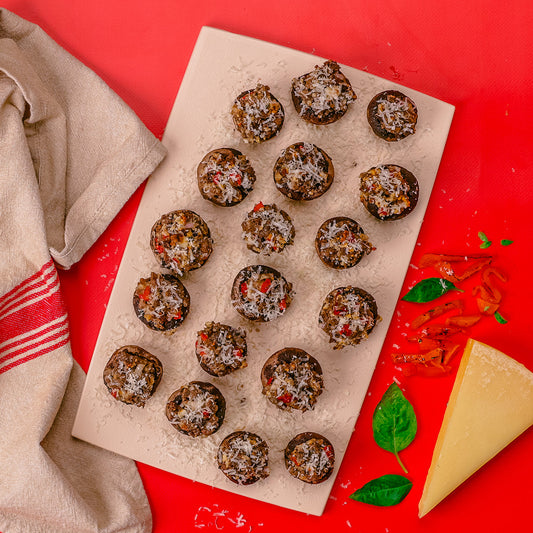
GMO: What You Need to Know
Insights from Patricia Willmot, Chief Operating Officer, Pre Brands
By now, you know that Pre is Non-GMO Project Verified. But do you really know what that means?
…and just as importantly, should you care?
As a discerning consumer, it’s up to you to choose your food. You find out what you can about your food choices and do your best to make an informed decision. But there’s a lot of information – and, unfortunately, sometimes misinformation – out there to consider. As a company founded in 100% transparency, we’ve made it our mission to give you the information you need.
For a deeper dive on GMOs and what they mean for beef, we went straight to Pre’s Chief Operating Officer Pat Willmot. Here’s what she had to say:
What are GMOs? And what do they have to do with meat?
“GMO” stands for Genetically Modified Organism and refers to plants, animals or other organisms whose genetic material has been changed in ways that do not occur naturally. The “non-GMO” claim means that the food is made without ingredients that were derived from genetically engineered organisms. For meat, poultry, dairy and eggs, Non-GMO Project Verified means the animals were not fed a diet containing genetically engineered crops.
So GMOs aren't being added directly to beef. However, cattle may consume feed that comes from a genetically modified plant. All cattle begin their lives on a farm or ranch, grazing on pasture or grass – none of which is a GMO. For Pre cattle, because they are grass fed and grass finished, this will be their sole source of feed for their lifetime.
We know that many animals receive rations of grain, which may contain corn or soybeans, both of which have genetically modified hybrids and varieties. Cattle sometimes also eat alfalfa hay. Alfalfa is another crop with a genetically modified option. The beef from these animals typically cannot meet the “non GMO” claim.
The majority of genetically engineered crop acres in North America are used for animal feed. According to the USDA’s last agriculture census1, 60% of all cropland is used for three crops: corn, soy and forage. More than half of that corn and soy is used for animal feed, and almost all of it is GMO. According to the USDA Economic Research Service2, 92% of U.S. corn harvested in 2016 was genetically engineered, as was 94% of the soy. With the introduction of genetically engineered alfalfa in 2010, forage acres are also increasingly at risk for being GMO.
What all this points to is that animal feed is the key to a non-GMO future.
Why Non-GMO Feed is Important
If you’re wondering why it matters what an animal eats, consider this: almost all GMOs are engineered for one of two traits, or a combination of both. These traits are 1) Herbicide tolerance, where a plant can be sprayed directly with a chemical pesticide like Roundup and survive, and 2) Insecticide production, where a plant produces the Bt (Bacillus thuringiensis) toxin so that if an insect eats any part of the plant it will die. From a sustainability perspective, these traits may have serious consequences for the environment and for our food system.
Does Pre’s Sourcing Impact GMO Status?
Pre sources its beef from New Zealand, South Australia and Tasmania.
No genetically modified crops are grown commercially in New Zealand. No fresh fruit, vegetables or meat sold in New Zealand is genetically modified.
The cultivation of GM food crops is prohibited in South Australia, under the Genetically Modified Crops Management Regulations 2008, which were made under the Genetically Modified Crops Management Act 2004. The ban was recently extended to 2025. In addition, Tasmania (considered an island state of Australia) has extended indefinitely the state’s moratorium on genetically modified crops and animals.
How did Pre get Non-GMO Project Verified?
In order to claim “Non-GMO Project Verified,” Pre worked with a third party certifying body and provided full and complete documentation about how and where we source our beef. We believe that third party certifications are the best way to verify a claim, because they ensure the claim is unbiased, rigorous and transparent. Only once the third-party agency was satisfied with our documentation, were we able to say our beef is Non-GMO Project Verified.
Questions? Please ask! We’re an open book. Respond in the comments below, or send us a note: ReachUs@eatpre.com.
References:
- Total acres and cropland statistics based on 2012 Census of Agriculture, USDA, National Agriculture Statistics Service.
- GMO percentages from the USDA Economic Research Service, 2016.


